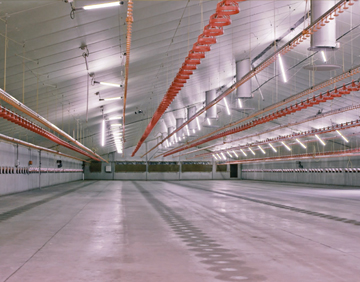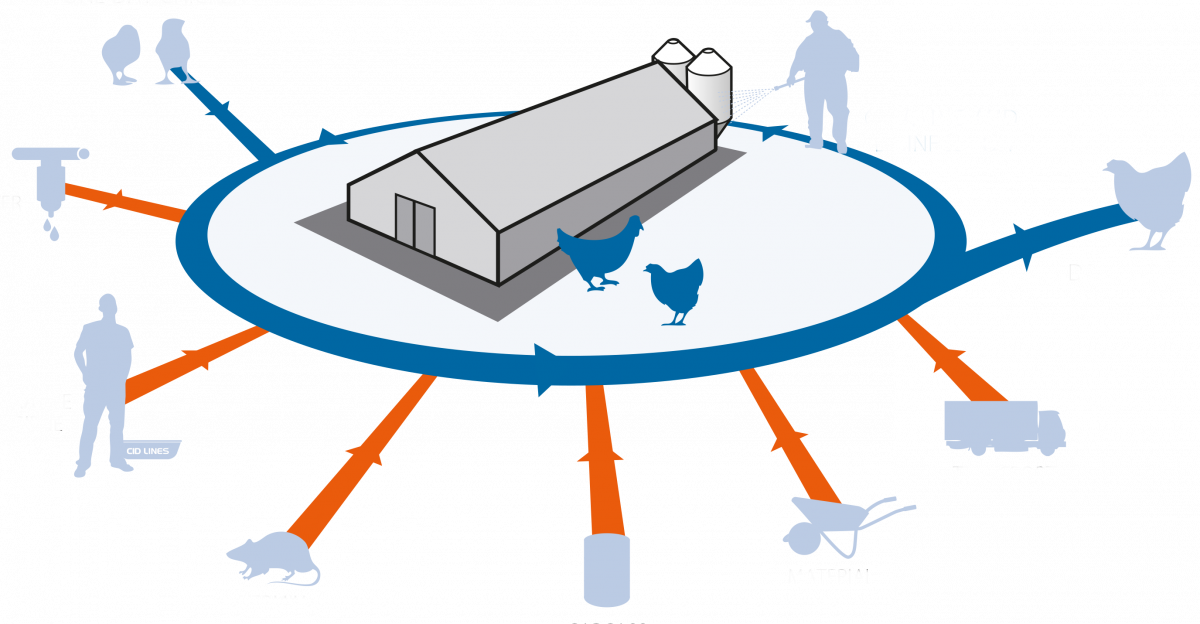Biosecurity internal and external
Biosecurity is not about targeting on one or two possible contamination risk factors and hoping you have made the right choice. Biosecurity is about controlling and addressing a whole series of little critical points.
External biosecurity refers to those measures taken to keep disease agents out of populations, herds, or groups of animals where they do not already exist. To truly assess how risk full a certain contamination route is on a farm, you need not only to consider how big the chance is of that vector (for example: feed delivery, transport entering the farm, people movements, etc) to contaminate your farm. You also have to take in the account the frequency of that contamination route on the farm. In other words, how many times that risk is taken per year.
The true risk can be expressed by using following probability formula: P = 1-(1-p)n p (risk of transmission route) = 0.1%. The chance that this transmission route will actually cause a real danger or contamination on the farm is 1 out of 1000! n (frequency of transmission route) = 50. So this very small risk is taken weekly. The true risk of contamination on your farm by that specific transmission route will be P= 1 –(1- 0.001)50 => 4.88%!
CID LINES, an Ecolab company, is your partner to carry out biosecurity and hygiene plan on your farm by offering plenty of working tools and expertise.
CID LINES, an Ecolab company, offers products protecting you at every entrance!
Prevention is the best treatment!
Antimicrobial resistance (AMR) is omnipresent both in human and veterinary medicine. Whether we use too much antibiotics, we don't apply them in an adequate way (under- or overdose) or we use the correct dose of antibiotics to treat an infection, we encourage in every way the developing of this antimicrobial resistance.
Our body and the body of our animals are full of bacteria (in the nose, in the intestine, on the skin, …). Not all bacteria are dangerous or pathogenic, we need a lot of them to survive.
For more information go check our AB Reduction page.

